Mysore Rasam – an aromatic, flavourful and comforting rasam. Rasam is a traditional South Indian soup / broth served as a side dish with rice. The speciality of this Mysore rasam is the use of freshly made mysore rasam powder made by roasting and grinding few spices along with trace amount of coconut. Addition of coconut in rasam powder is quite unusual but gives a distinct and aromatic flavour. This refreshing and soothing Mysore rasam can be served along with hot steamed rice with a dash of ghee.
Cooking Time: 20 – 30 minutes
Serving: 2 -3
Ingredients:
| Tamarind | small gooseberry size |
| Tomato (ripe) | medium size |
| Toor dhal (to pressure cook) | 2 to 3 teaspoon |
| Turmeric powder | 1/2 teaspoon |
| Hing / Asafoetida | 1/4 th teaspoon |
| Jaggery (optional) | small piece |
| Salt | to taste |
| Curry leaves | few |
| Coriander leaves | to garnish |
To roast & grind:
| Coriander seeds | 1 teaspoon |
| Channa dhal | 1 teaspoon |
| Peppercorns | 1/2 teaspoon |
| Jeera / cumin seeds | 1/2 teaspoon |
| Red chilli | 3 |
| Shredded coconut | 2 teaspoon |
| Ghee | 1/2 teaspoon |
To temper:
| Ghee | 1 to 2 teaspoon |
| Mustard seeds | 1 teaspoon |
| Jeera / Cumin seeds | 1/2 teaspoon |
| Curry leaves | few |
| Hing / Asafoetida (optional) | 1/4 th teaspoon |
Step by Step Instructions:
- Pressure cook around 3 teaspoons of toor dhal along with a pinch of turmeric powder for 3 to 4 whistles. Mash the dhal well and add warm water and dilute it to around 1 cup. Keep it aside.
- Take a fully ripened medium size tomato in a pot and squeeze /mash it using hands. If you prefer the rasam to be in a clear consistency, then squeeze and discard the skin / pulp.
- Soak gooseberry size tamarind in warm water for about 15 minutes. Extract about 2 cups of tamarind juice from this.
- Add the tamarind extract to the the pot containing the mashed tomato.

Mashed & diluted toor dhal 
Tomato 
Mashed tomato 
Tamarind soaked in warm water 
Tomato & tamarind extract
- To prepare fresh mysore rasam powder – Take a pan and add half teaspoon ghee. Add 1 tsp coriander seeds, 1 tsp channa dhal, 1/2 tsp peppercorns and 3 red chillies. Roast the ingredients in low to medium flame until the lentils turn golden brown. Now add 1/2 tsp cumin seeds and 2 tsp shredded coconut. Saute for few seconds and switch off the flame. Transfer the roasted ingredients to a plate and allow it to cool. Grind it to a coarse powder.
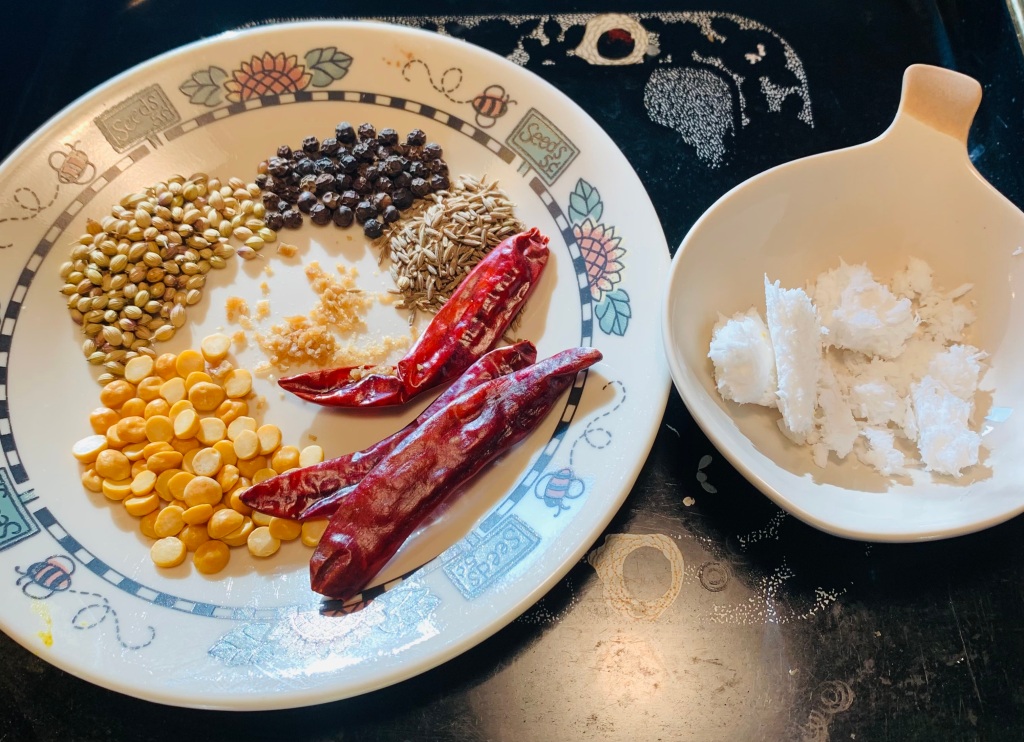
Coriander seeds, Channa dhal, Peppercorns, Cumin seeds, Red chillies, Coconut 
Spices roasted in ghee 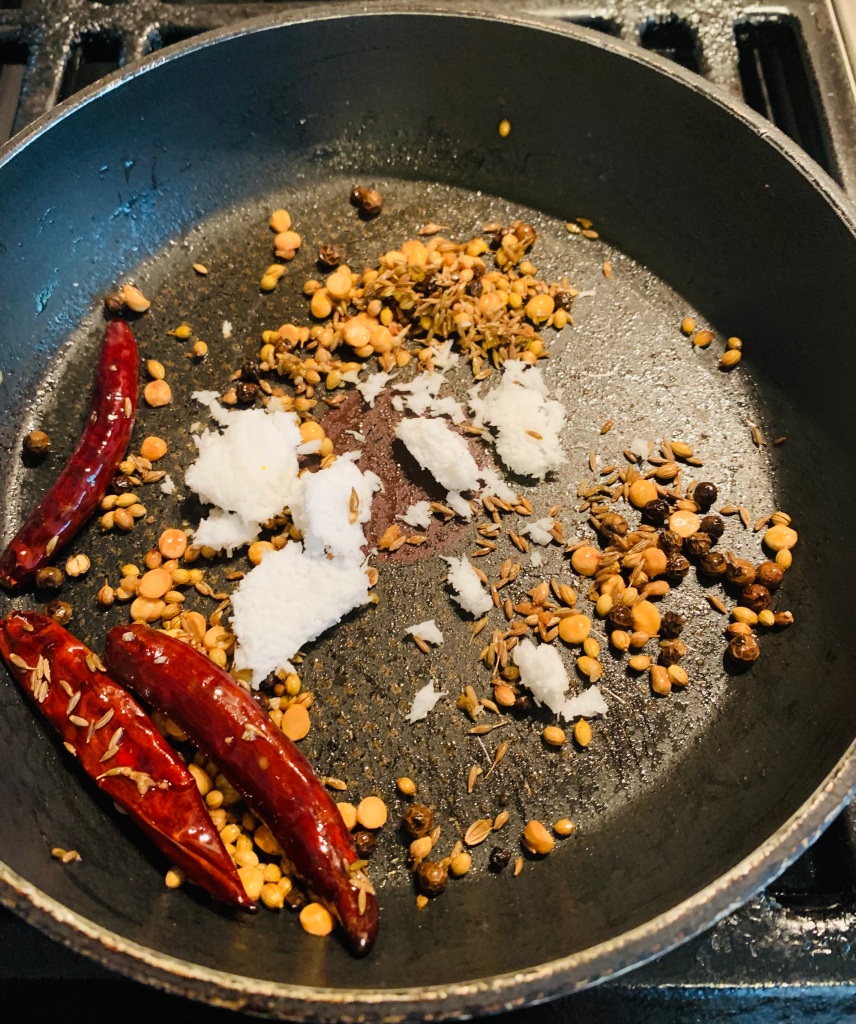
Spices & coconut roasted in ghee to golden brown 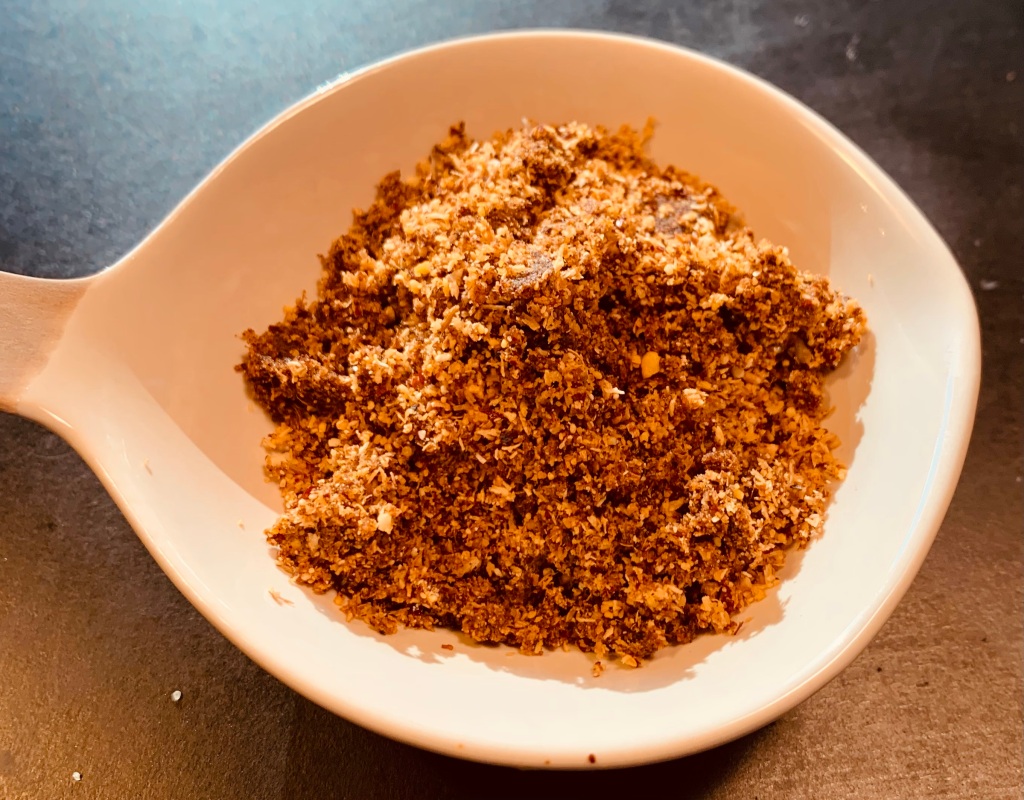
Mysore rasam powder
- To the pot with mashed tomato and tamarind extract, add salt and 1/2 tsp turmeric powder. Add 1/4th tsp hing and few curry leaves. Allow this to boil for 1 or 2 minutes until the raw flavour of the tamarind goes away.
- Add about 2 to 2 1/2 tsp freshly prepared mysore rasam powder and a small piece of jaggery. Cook for 1 or 2 minutes until the rasam starts to boil. Do not boil for too long after adding the rasam powder.
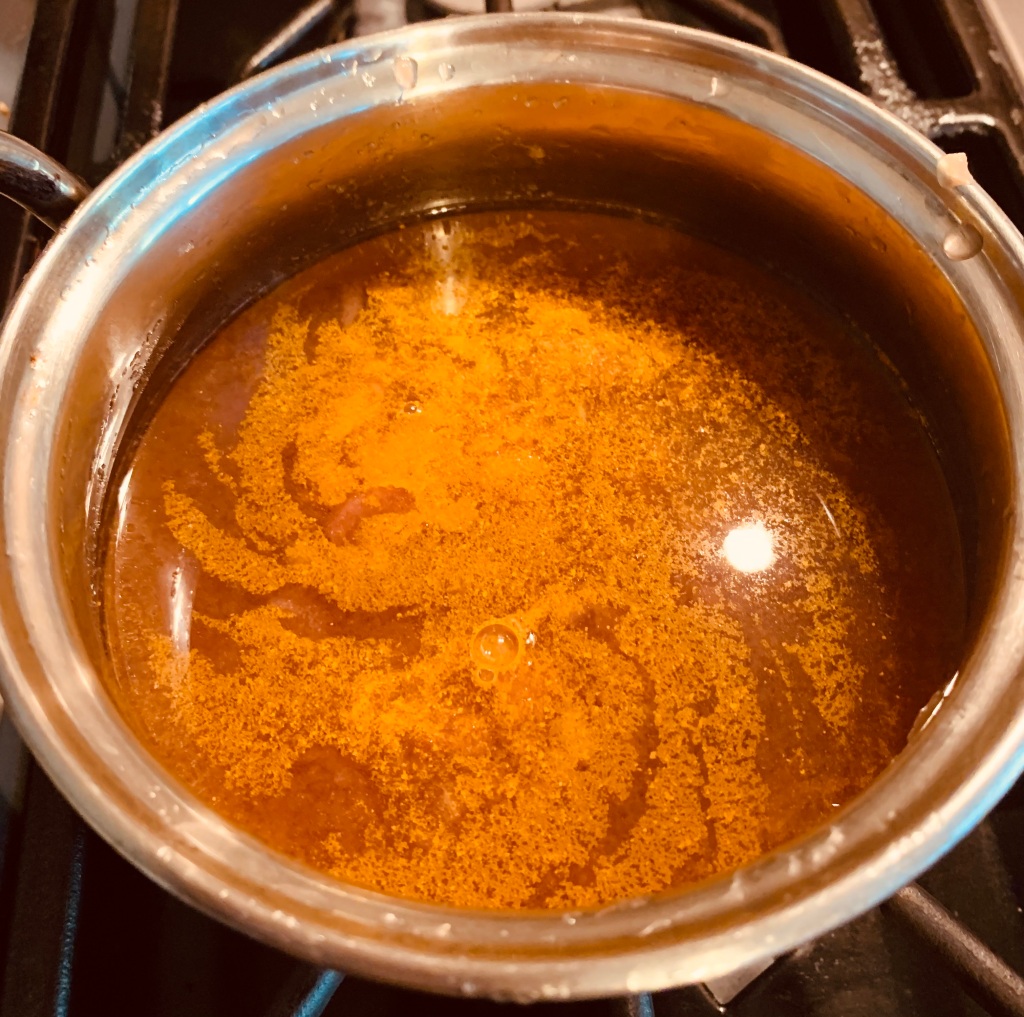
Tamarind exctract, tomato, turmeric 
with curry leaves, salt 
with mysore rasam powder
- Now add the diluted mashed dhal. If you are adding just the mashed dhal without diluting, then add 1 cup water. Simmer the rasam until it forms a froth on the top layer. This might take 3 to 5 minutes. The above measurements give 3 to 3 1/2 cups of rasam sufficient enough for 2 – 4 servings.
- Garnish the rasam with finely chopped coriander leaves.
- To temper – In a pan, add 1 to 2 tsp ghee, add 1 tsp mustard seeds. When the mustard seeds crackle, add 1/2 tsp cumin seeds and few curry leaves. Switch off the stove and add a pinch of hing. Pour this tempering over the rasam. Close the pot with a lid immediately after tempering so that the rasam absorbs all the flavours.

Rasam is simmered until it forms a froth 
Tempering 
Mysore rasam
- Serve this delicious and comforting Mysore rasam with steamed rice and a dash of ghee.

Notes:
- The left over Mysore rasam powder can be used for dry curries or South Indian kootu varieties.
- If you prefer to make this rasam powder ahead of time, then exclude the coconut and follow the same instructiuons as given. Alternatively, while making the rasam powder, you can roast the shredded coconut to golden brown. This will increase the shelf life of the rasam powder.
- For authentic Mysore rasam, use Bydagi red chillies instead of the regular red chillies. Bydagi red chiilies is a popular chilli variety grown mostly in the state of karnataka. They are known for its bright red colour and is less spicy compared to the regular red chillies.
Check out my other Rasam Varieties:
- Sesame Rasam / Ellu Rasam
- Ajwain Rasam / Omam Rasam
- Detoxifying Neem Flower Rasam / Vepamboo Rasam
- Lemon / Ginger / Coriander Rasam


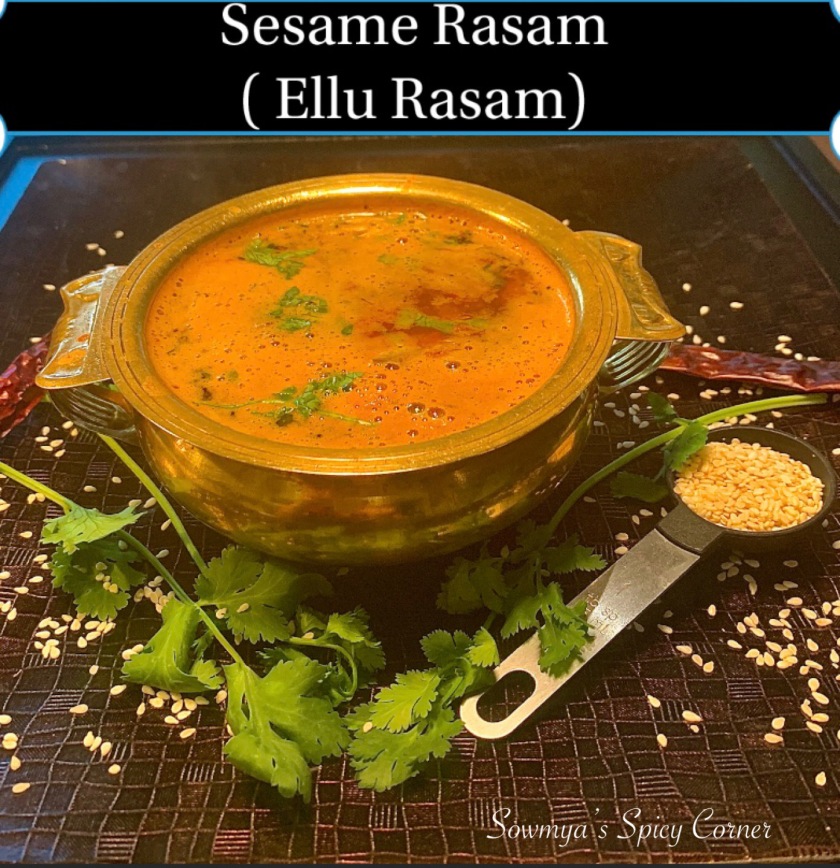
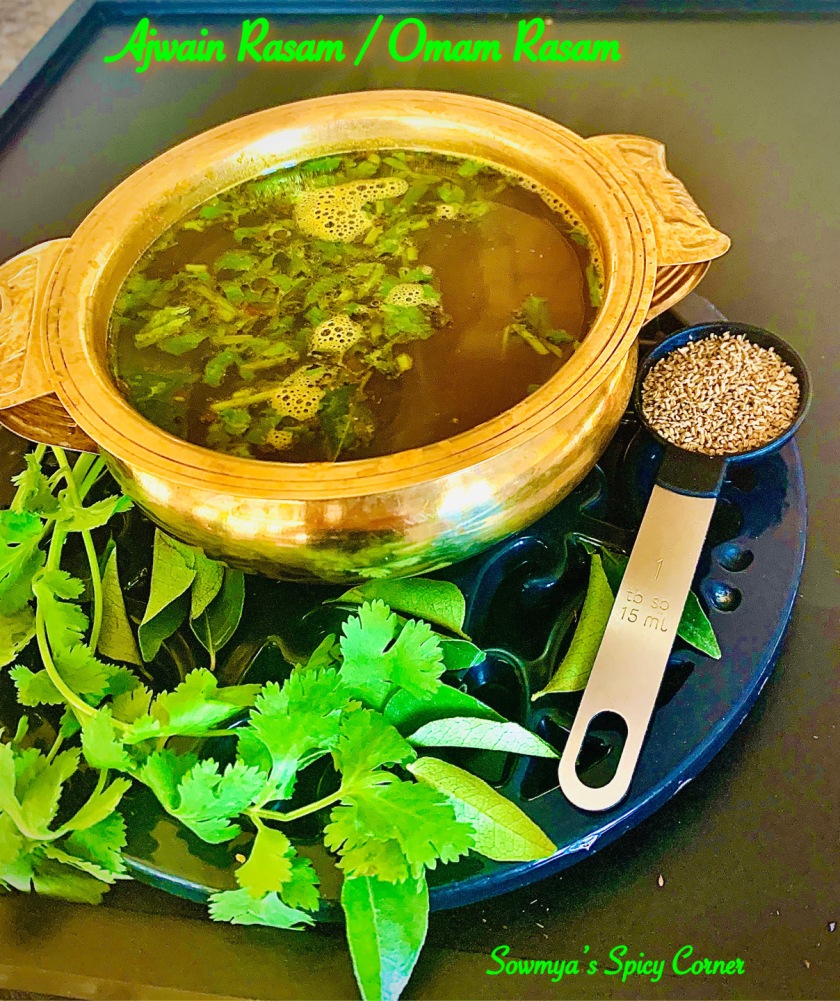
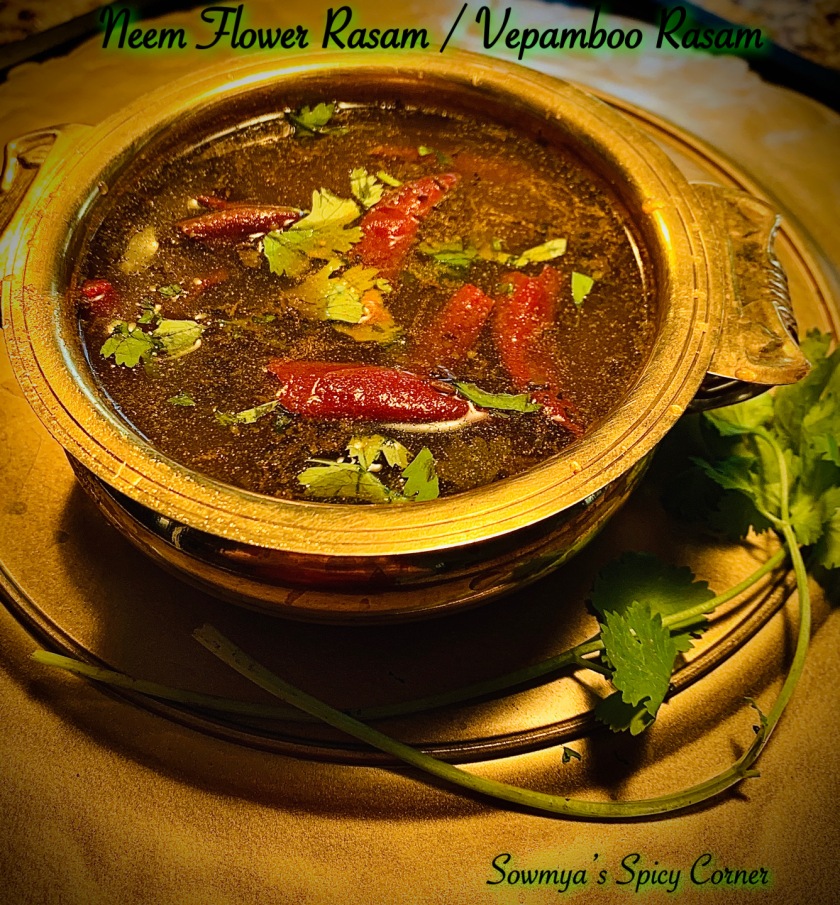

Looks absolutely yum!😋💕✨ Since it’s soup I wonder it’s a keen food to stay cozy during cold winter?😌💕
LikeLiked by 3 people
Thanks a lot Tanooki. Yes this rasam / soup is comforting for winter months.
LikeLiked by 2 people
Wow it looked, do delicious,I will try this Akka
LikeLiked by 3 people
Thanks Indhu. Glad you like it
LikeLiked by 1 person
This looks so delicious, Sowmya. With your lovely inspiration I am starting dinner. 😃
LikeLiked by 3 people
Thanks a lot Michele for stopping by. Appreciate your kind words.
LikeLiked by 2 people
My pleasure. Thank you for your delicious shares and all the work that goes into putting those together.
LikeLiked by 3 people
Thanks a bunch Michele for all your support and encouragement. It means a lot to me.
LikeLiked by 2 people
You inspire me to create in the kitchen. So thank you! 🌻
LikeLiked by 2 people
Thanks a lot Michele
LikeLiked by 2 people
I love garlic Rasam but I can’t cook it and those who can cook it they don’t love it.Thanks a lot for sharing such a lovely recipe.Take care.🙏🌹😇
LikeLiked by 3 people
Thank you Francisashis.
LikeLiked by 1 person
My pleasure.🙏🌹😊
LikeLiked by 2 people
It looks like sambar.. I think they both are almost the same..
LikeLiked by 3 people
Kushi – Sambar and Rasam are different. Although they are prepared with similar ingredients, the proportion of the spices and lentils vary and also method of cooking gives a distinct difference between the two both in consistency and taste. Thanks for your comment.
LikeLiked by 2 people
Oh okay! Thank you for the information!
LikeLiked by 3 people
Wow, elegant, and delicious, Sowmya. Seems like a perfect dish anytime, and one I would like even more on a day like today. Rainy and cold. Lovely recipe.
LikeLiked by 3 people
Thanks a lot Jeff for your encouraging and kind words. Yes this rasam is perfect for a rainy / cold day. Thanks for your comment.
LikeLiked by 2 people
You’re most welcome, Sowmya. Always. Indeed, perfect for colder days. Agreed.
LikeLiked by 2 people
Very nice. Mysore Rasam diss recipe. I like. Delicious 👌
LikeLiked by 3 people
Thank you very much.
LikeLiked by 2 people
Yummmyyyy…! Great variety of ‘Rasams’, Sowmya!
LikeLiked by 3 people
Thanks a lot Indira
LikeLiked by 1 person
Sounds wonderful
LikeLiked by 3 people
Thank you
LikeLiked by 2 people
Very welcome
LikeLiked by 3 people
LOVE this. Going to try Rasam this weekend!
LikeLiked by 3 people
Thank you very much. Do try and let me know
LikeLiked by 1 person
Perfect for a cold autumn day.
LikeLiked by 2 people
Yes indeed Rupali. Thank you
LikeLiked by 1 person
Yum…looks delicious Sowmya 🙂
LikeLiked by 2 people
Thank you very much
LikeLiked by 1 person
Looks so comforting! I wish I have it right now during this cold fall morning! Thank you very much as well for visiting my blog and for your generous “likes.” I am looking forward to reading more about your cooking. 🙂
LikeLiked by 2 people
Thank you Leah for your support and encouragement.
LikeLiked by 2 people
Seeing time known it is so much aroma and tasty 😋 my favourite also 👌🌷🙏♥️
LikeLiked by 2 people
Thank you Thattamma
LikeLiked by 2 people
So welcome 🙏🌷♥️
LikeLiked by 2 people
Great sharing Sowmya! Liked it!!
LikeLiked by 2 people
Thanks a bunch Jyothi
LikeLiked by 2 people
Wow…super yum recipe
LikeLiked by 2 people
Many thanks Sadhana
LikeLiked by 1 person
Looks yum! Will definitely try it out 😀
LikeLiked by 2 people
Thanks a lot
LikeLiked by 2 people
Sounds interesting and looks yummy!, Sowmya. Thank you for kindly sharing your recipe.
LikeLiked by 2 people
Thanks a lot for your positive feedback Thulasi
LikeLiked by 2 people
You’re most welcome Sowmya
LikeLiked by 2 people
This sounds like a delicious bowl of comfort food on a cold day 🙂 x
LikeLiked by 2 people
Yes indeed Carol. Its a comforting food when mixed with rice or it could just be served as a soup.
LikeLiked by 1 person
Looking very yummy yummy 😋 so nice thank you 💕🎉
LikeLiked by 2 people
Appreciate your kind words Priti
LikeLiked by 1 person
Just feel like drinking one glass of this healthy rasam.
Nandri/ಧನ್ಯವಾದಗಳು
LikeLiked by 2 people
Ha ha. Yes it is comforting and soothing to drink as soup. Thanks a lot .
LikeLiked by 2 people
Just looking at the pics of your receipe. Making my mouth watering. Food is first thing to survive the life.
Not only you are taking care of self and family but making this entire process meaningful and awesome.
Hats off to your endeavor .
May god reward you for your efforts by giving you success and peace in your life.😀
LikeLiked by 2 people
Thanks a bunch for your generous and kind words. Feel humbled and honoured by your kind remarks.
LikeLike
Love it
LikeLiked by 1 person
Thank you very much
LikeLike
I am sure this one will be my favorite. Got to try this at home! 😇
LikeLiked by 1 person
Thank you dear
LikeLiked by 1 person
You are welcome! 😊
LikeLiked by 1 person